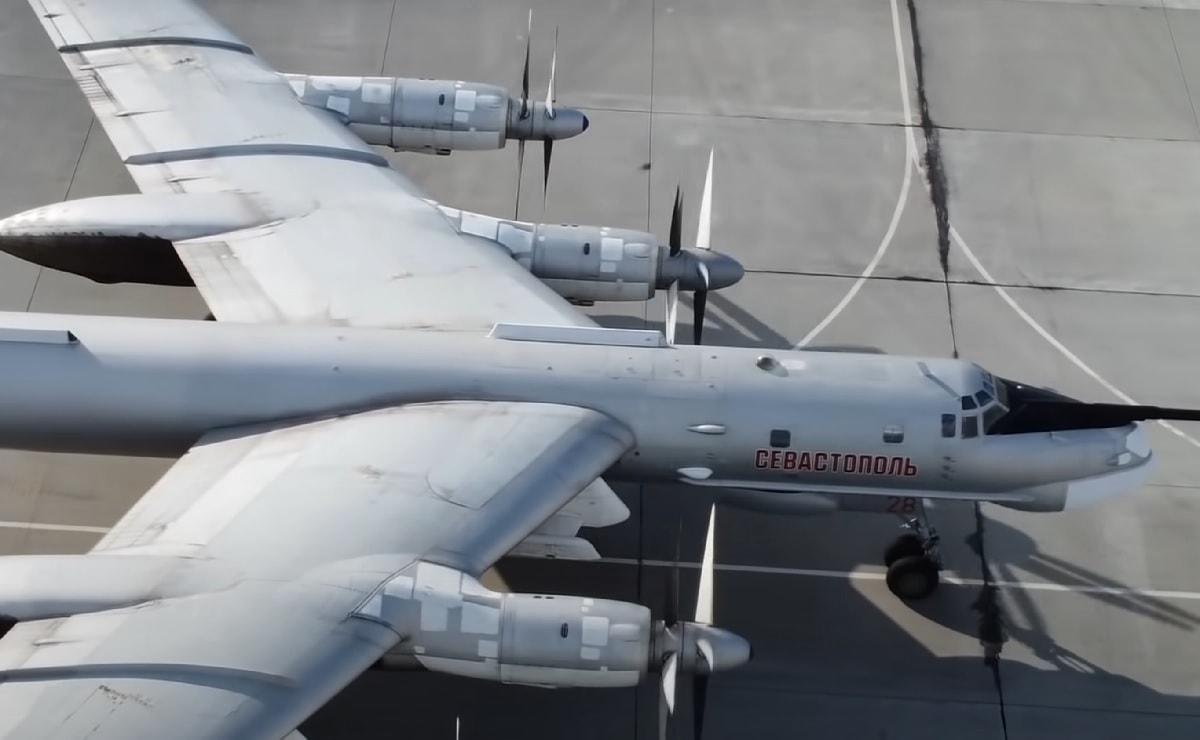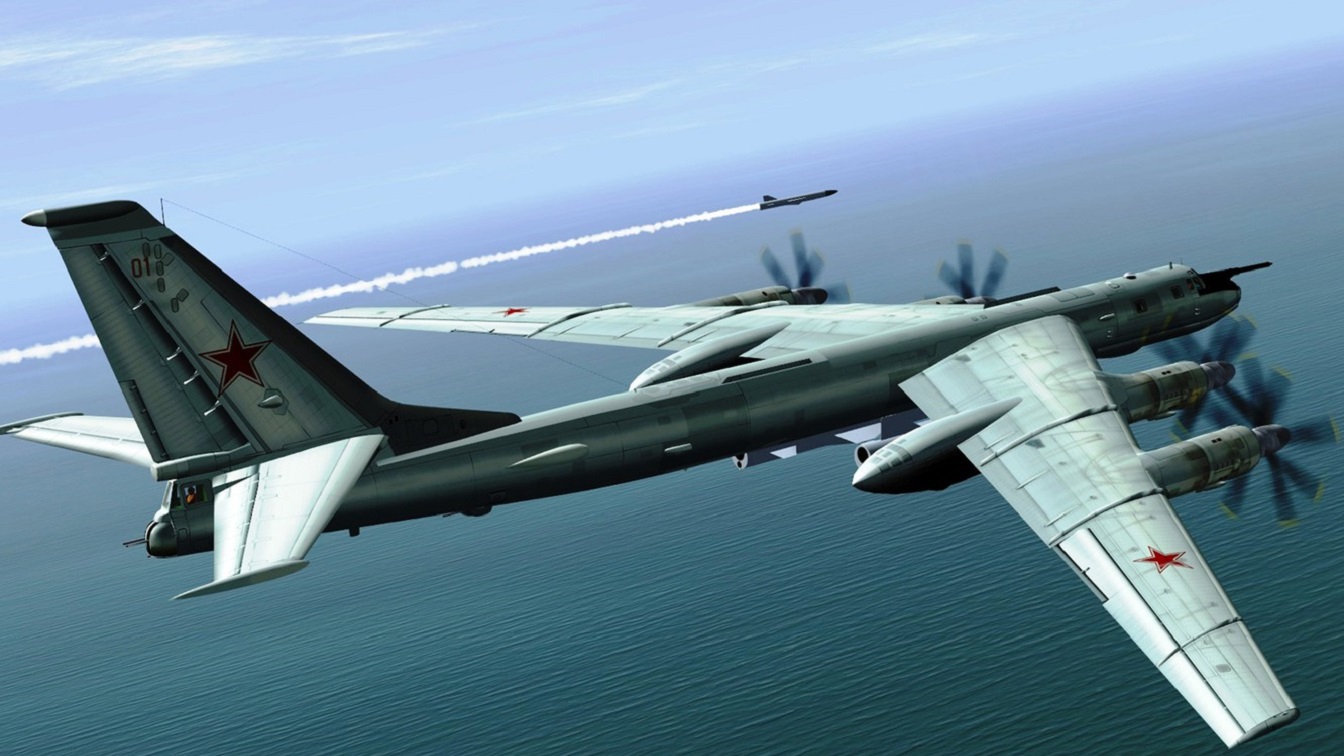The Russian Tupolev Tu-95MS (NATO reporting name “Bear-H”) is among the oldest aircraft designs still flying. The highly updated heavy bomber, which was designed in the Cold War era and first entered service in 1952, continues to log miles in the sky.
As the only propeller-powered bomber in operation, the Tu-95MS is far from the fastest aircraft. But it was designed to fly a distance of 5,000 miles and strike targets within the United States from territory within the former Soviet Union. The current models have a reported range of more than 9,300 miles.
It was developed to be equipped with propeller-driven engines. This was due to the fact that jet engines in the early 1950s simply burned through fuel far too quickly, and the Soviet air force lacked the capability to refuel its long-range aircraft in flight. The Tu-95 was meant to fly slow and steady, and the most recent version continues to do the same.
The Tu-95MS Bear-H is also the only frontline aircraft still equipped with a tail gunner’s position. Even in modern versions, the tail gunner still sits in a rear compartment that is isolated from the rest of the crew. It houses twin 23mm cannons that are meant to provide an additional defense against fighter-interceptors, but it lacks anything resembling creature comforts.
Symbol of Pride
It is unclear why NATO designated the Tu-95 as the “Bear,” but the moniker was embraced by the Soviets. The heavy bomber became a symbol of pride. It was touted to be much like the nation: rugged, hard-working, and simple in design. It wasn’t as flashy as the U.S. Air Force’s B-52 Stratofortress, a fact that was immediately evident when the Bear appeared at European air shows.
A notable point about the Tu-95MS is that the airframe is actually far newer than the rival B-52’s. While the original Bears did enter service 70 years ago, the Soviet Union sought to modernize the aircraft in the early 1980s. It found that the aging airframes were essentially past their normal life. As a result, an entirely new batch of aircraft was produced as the Tu-95M – the modernized variant.
Those aircraft have been steadily upgraded as the MS variant, which remains a key element of the air component of Russia’s nuclear triad, while also serving in a maritime reconnaissance role. The airframes have also been upgraded to carry Kh-101/102 stealth cruise missiles.
Despite the fact that the original Tu-95s first entered service 70 years ago, the aircraft wasn’t actually deployed in combat until 2015, when a pair of Tu-95MS bombers were used in a series of long-range airstrikes as part of the Russian military intervention in Syria.
Analysis of the Tu-95MS – Logging the Miles
The Bear certainly has racked up some frequent flier miles in recent years. The aircraft are regularly deployed on what the Kremlin calls “routine patrol flights,” many of which start from its borders and are sorties over the Baltic and Bering Seas.
In recent weeks, the Russian aircraft have on two separate occasions entered the Alaskan Air Defense Identification Zone, the self-declared buffer that sits outside of U.S. airspace. In recent years, the Tu-95MS bombers have been seen with could be described as disturbing regularity.

In addition, just this week, a pair of Bears took part in a patrol mission over the Sea of Japan, in a flight lasting about 70 hours. The bombers were escorted by Sukhoi Su-30SM fighters, and at certain stages of the flight, the bombers were escorted by South Korean fighter aircraft.
Despite its age, the Bear certainly maintains some sharp claws.
Expert Biography: A Senior Editor for 1945, Peter Suciu is a Michigan-based writer who has contributed to more than four dozen magazines, newspapers, and websites with over 3,000 published pieces over a twenty-year career in journalism. He regularly writes about military hardware, firearms history, cybersecurity, and international affairs. Peter is also a Contributing Writer for Forbes. You can follow him on Twitter: @PeterSuciu.

